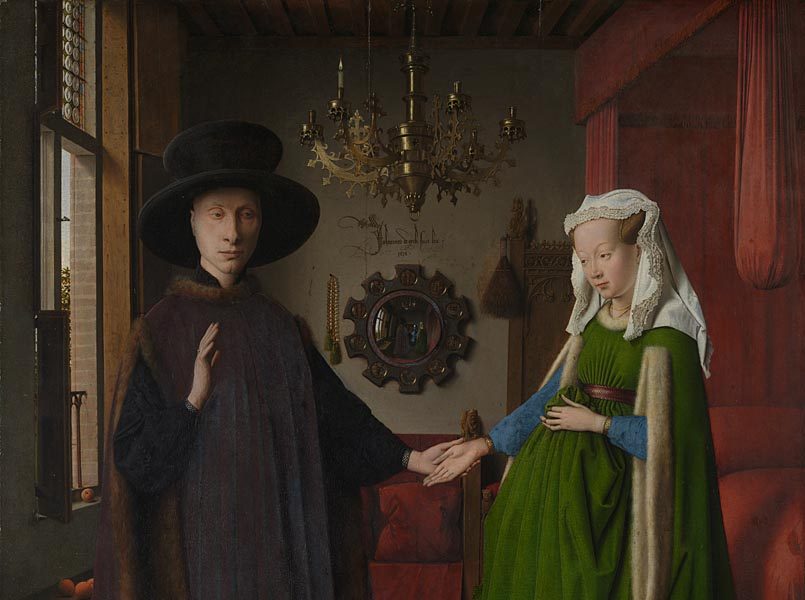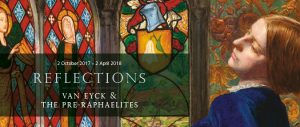Reflections: Van Eyck and the Pre-Raphaelites at the National Gallery

When it was acquired by the National Gallery in 1842, The Arnolfini Portrait, Van Eyck’s stunning 1434 image of domestic life, was one of only a handful of early Netherlandish paintings in the country. It has long been credited with inspiring a group of students at the Royal Academy (then based in a wing of the National Gallery on Trafalgar Square). Bored with the pictorial techniques they were being taught, the story goes, three men wandered over to the museum’s rooms of pre-Renaissance works and were inspired to start a movement that some think of as Victorian tripe and some consider to be one of the most radical artistic movements in British history.
Think of them what you like, but the Pre-Raphaelites, as Dante Gabriel Rossetti, John Everett Millais and William Holman Hunt rather pretentiously named themselves in 1848, fundamentally changed both the creation and reception of art in this country. And, according to this show at the National Gallery, it all started with The Arnolfini Portrait.
Looking at the early work of the Pre-Raphaelites alongside pieces by Van Eyck and other “primitive” painters such as Hans Memling, there is a clear correlation of styles. The minute precision of the scenes depicted, the use of jewel-bright tones and a fascination with symbol-filled domestic interiors all demonstrate the influence of these early developers of oil painting on the later movement.
The problem is that the correlation is both blindingly obvious and yet not obvious at all. In aesthetic terms, it would be mad to deny that these works influenced the Pre-Raphaelites, especially in examples such as Millais’s stunningly beautiful Mariana (1850-1851). However, there is very little textual or practical evidence to say that members of the Pre-Raphaelite Brotherhood thought much about Van Eyck at all; the few evidential examples mostly come from Edward Burne-Jones and William Morris, who only joined the group in the late 1850s and whose works bear much less resemblance to Van Eyck than the Brotherhood’s founding members.
Perhaps as a consequence, the curation of the show quickly veers away from the most startling works to a slightly tenuously connected section on the role of mirrors in Pre-Raphaelite and post-Pre-Raphaelite art. The quality of pieces here isn’t anywhere near so high and it seems unclear why some of them have been chosen, apart from the fact that they contain images of mirrors.
It quickly becomes apparent that this show would have worked better as a series of essays and explorations of different themes surrounding Van Eyck, the Pre-Raphaelites and mirrors; indeed, this is what the – very good – exhibition catalogue achieves. It’s just a shame that these ideas don’t translate so well in an exhibition context.
Nevertheless, the display offers an important opportunity to get up close and personal with The Arnolfini Portrait, which undoubtedly benefits from prolonged looking, as well as a chance to see some well-known Pre-Raphaelite paintings in a new light.
Anna Souter
Reflections: Van Eyck and the Pre-Raphaelites is at the National Gallery from 2nd October 2017 until 2nd April 2018. For further information or to book visit the National Gallery website here.





















Facebook
Twitter
Instagram
YouTube
RSS